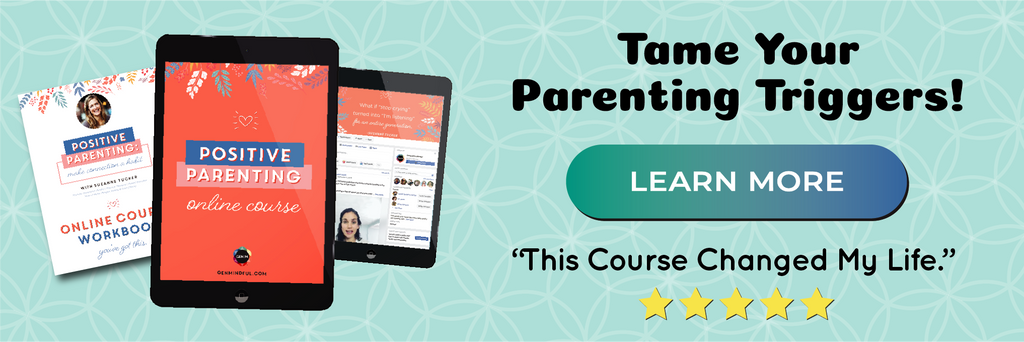
I find myself constantly wondering how my children are feeling. You might think through their big behaviors and big displays of emotions that it would be easy to tell. But I often wonder, below that, how are they really doing?
Sometimes, I ask my kids and they say, “Fine” or “Good” like that gives any insight into their emotional well-being. Grrr.
It can be hard to connect when our children are reluctant to share. Here are some tips to help your children want to talk.
1. Find Your center
If your children fear your response when they tell you something, especially something undesirable, then they won’t want to share those parts of themselves with you in fear that they will 1) get in trouble or 2) cause you discomfort. Instead, take a deep breath and consider yourself a guide by the side as they navigate their journey. What do you need to do to regulate your nervous system so that you can witness theirs?
2. Discover their needs
Oftentimes, with best intentions, we want to fix or solve our children’s problems. But that shifts us out of connection and into control. So that everyone is on the same page, ask your child, “Do you want me to listen, give my opinion, or help (if applicable)?” This will guide your level of support.
3. Be objective
Sometimes our impulse is to oppose what our children are saying or we may feel upset that they didn’t come to us sooner. Instead, don’t take it personally. Your child’s process is their own. Thank them for confiding in you NOW. Mirror and reflect on what you’ve heard them say or offer nonverbal gestures to communicate your listening.
4. Don’t take it personally
When our children are moving from an emotional space, they often find it tricky to access their logical place. So, their anger, pain, confusion, or jealousy may come out sharply toward you. Instead of taking it personally and becoming defensive, recognize this behavior as a sign of their dysregulation.
5 Validate their responses
When children feel seen and heard, they feel powerful to share more of themselves with you, and they feel secure enough to hear your thoughts too. Instead of saying things like, “That is silly to feel that way. You know your friends love you.” Offer something like, “It seems like recess didn’t go the way you wanted it to. I hear you when you say you felt left out. That sounds hard.”
6. Avoid shame tactics
Statements like, “I told you so” or “you deserve what you got” are not productive in teaching problem-solving or conflict resolution skills but rather cause the internalization of shame. Our children will mess up from time to time and that is separate from their worth. Instead, model empathy and compassion as they navigate natural consequences. This may also be an appropriate time to share some of your prior mess-ups, too.
7. Instill confidence
We sometimes overdo for our children because seeing them struggle is a struggle for our hearts. As you connect with your child, make space for the learning opportunity that presents itself. Instill confidence without fixing. “I believe in you. I know you will find a solution that works for you. I am here for you if you get stuck.”
8. Believe what you hear
Sometimes kids lie to establish identity and sometimes they lie because they don’t have another way to deal with a conflict. Sometimes they fear they will get in trouble if they give an answer their adult doesn’t want to hear. Majority of the time, their lie isn’t a lie at all. When a parent tells a child that they aren’t telling the truth, the child will often shut down and jump ship. Instead of accusing the lie, explore further. “How did that happen? Would you tell me more?” Or, “I hear you saying __. Help me understand.” Or, “It sounds like you wish __ were true.”
9. Chat at unexpected times
Sometimes our children will come to us on their own accord, readily willing to open up. Sometimes not, especially if they sense that we are too attached or have an expectation of our own. Face-to-face conversations can feel intimidating to children and so you may find their willingness to open up increases during unexpected moments such as riding in the car, snuggling in the dark before bed at night, or during some connection activity like coloring or going on a nature walk.
10. Practice sharing emotions
One of the most effective ways to create connection and safe sharing is through daily rituals. Use a feelings poster in a calming space to explore different emotions via games and activities such as Feelings Charades or Feelings Bingo. You can also create nightly rituals where you share about when you felt an emotion from each of the four mood groups and/or offer daily feelings check-in at random times throughout the day. This encourages your child (and you) to pause, check in with their body, label their emotions, and share them with another. This is how children wire the pathways for self-reflection and regulation, and this is how we re-write our own feeling pathways.
• • •
Generation Mindful creates educational tools, toys, and programs that nurture emotional intelligence through play and positive discipline. Get a FREE Time-In Starter Kit when you sign up to become a GENM member today!
Join us and receive positive parenting tools and support in your inbox each week.





Leave a comment